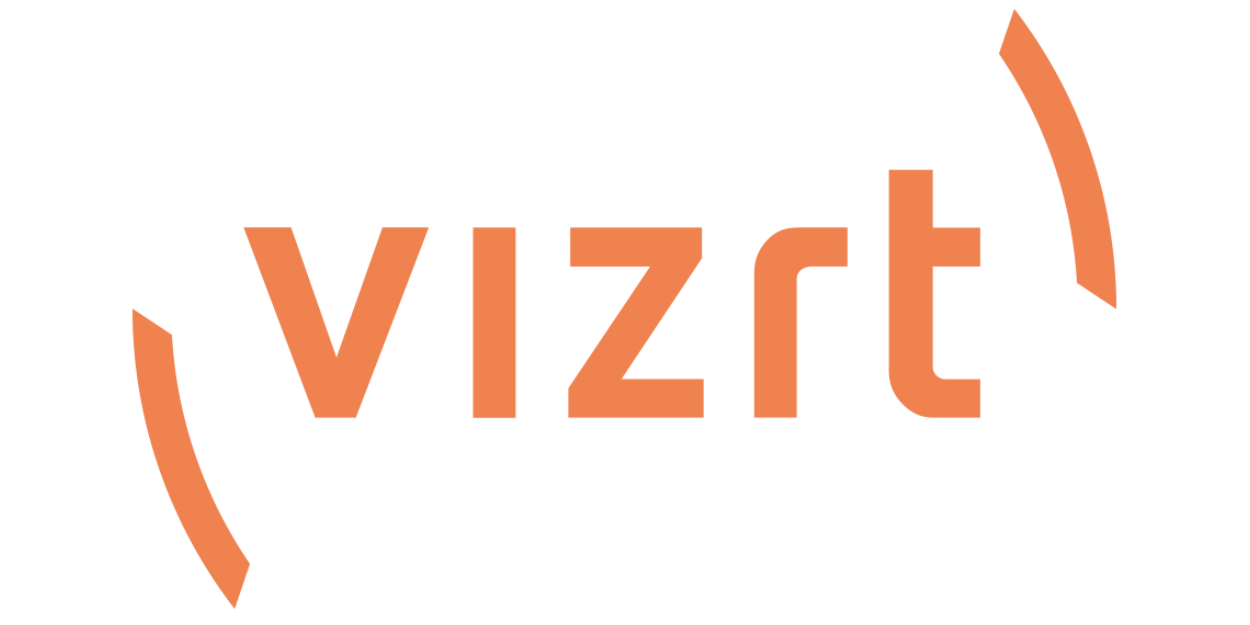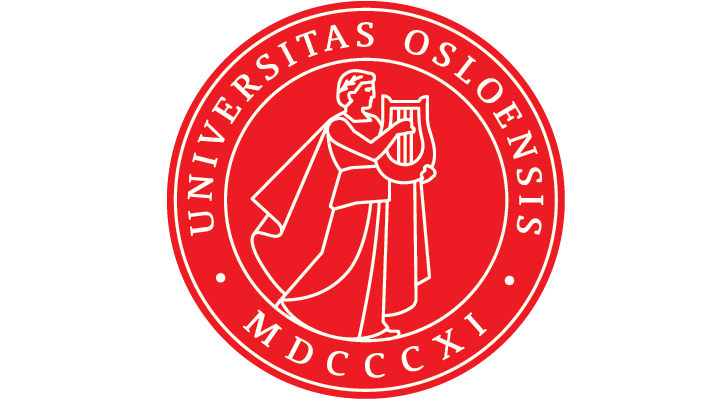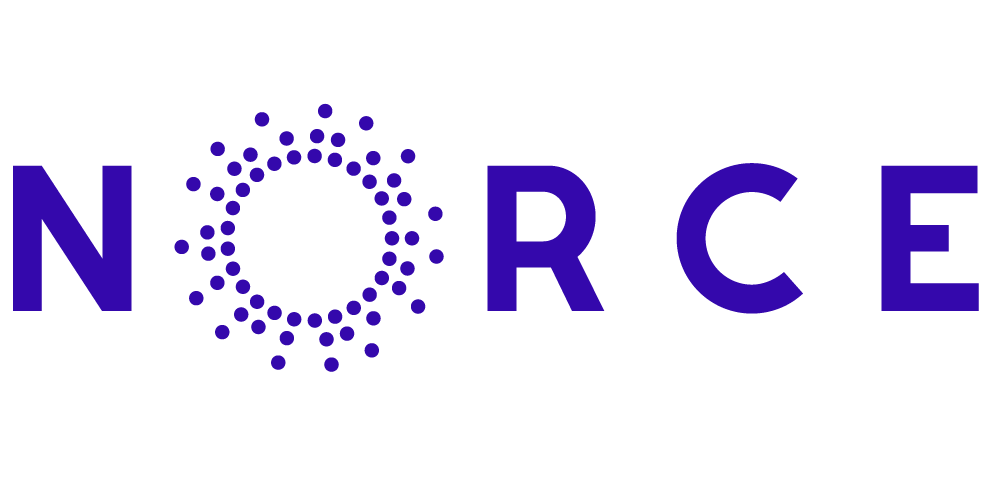About us
Publications
Home
2024
Ingar M Arntzen; Njål Borch; Anders Andersen
Control-driven Media. A unifying model for consistent, cross-platform multimedia experiences Journal Article
In: FTC 2024 International Journal of Advanced Computer Science and Applications (IJACSA), 2024.
Abstract | BibTeX | Tags: WP4: Media Content Interaction and Accessibility | Links:
@article{controldrivingar24,
title = {Control-driven Media. A unifying model for consistent, cross-platform multimedia experiences},
author = {Ingar M Arntzen and Njål Borch and Anders Andersen},
url = {https://mediafutures.no/preprint_cdm/},
year = {2024},
date = {2024-11-24},
journal = {FTC 2024 International Journal of Advanced Computer Science and Applications (IJACSA)},
abstract = {Targeting a diverse consumer base, many media providers offer complementary products on different platforms. Online sports coverage for instance, may include professionally produced audio and video channels, as well as Web pages and native apps offering live statistics, maps, data visualizations, social commentary and more. Many consumers are also engaging in parallel usage, setting up streaming products and interactive interfaces on available screens, laptops and handheld devices. This ability to combine products holds great promise, yet, with no coordination, cross-platform user experiences often appear inconsistent and disconnected.
We present emph{Control-driven Media (CdM)}, a new media model adding support for coordination and consistency across interfaces, devices, products and platforms, while also remaining compatible with existing services, technologies and workflows. CdM promotes online media control as an independent resource type in multimedia systems. With control as a driving force, CdM offers a highly flexible model, opening up for further innovations in automation, personalization, multi-device support, collaboration and time-driven visualization. Furthermore, CdM bridges the gap between continuous media and Web/native apps, allowing the combined powers of these platforms to be seamlessly exploited as parts of a single, consistent user experience.
CdM is supported by extensive research in time-dependent, multi-device, data-driven media experiences. In particular, State Trajectory, a unifying concept for online, timeline-consistent media control, has recently been proposed as a generic solution for media control in CdM. This paper makes the case for CdM, bringing a significant potential to the attention of research and industry.},
keywords = {WP4: Media Content Interaction and Accessibility},
pubstate = {published},
tppubtype = {article}
}
We present emph{Control-driven Media (CdM)}, a new media model adding support for coordination and consistency across interfaces, devices, products and platforms, while also remaining compatible with existing services, technologies and workflows. CdM promotes online media control as an independent resource type in multimedia systems. With control as a driving force, CdM offers a highly flexible model, opening up for further innovations in automation, personalization, multi-device support, collaboration and time-driven visualization. Furthermore, CdM bridges the gap between continuous media and Web/native apps, allowing the combined powers of these platforms to be seamlessly exploited as parts of a single, consistent user experience.
CdM is supported by extensive research in time-dependent, multi-device, data-driven media experiences. In particular, State Trajectory, a unifying concept for online, timeline-consistent media control, has recently been proposed as a generic solution for media control in CdM. This paper makes the case for CdM, bringing a significant potential to the attention of research and industry.
Bilal Mahmood; Mehdi Elahi; Samia Touileb; Lubos Steskal; Christoph Trattner
Incorporating Editorial Feedback in the Evaluation of News Recommender Systems Conference
ACM UMAP 2024, 2024.
Abstract | BibTeX | Tags: WP2: User Modeling Personalization and Engagement | Links:
@conference{incoed24,
title = {Incorporating Editorial Feedback in the Evaluation of News Recommender Systems},
author = {Bilal Mahmood and Mehdi Elahi and Samia Touileb and Lubos Steskal and Christoph Trattner},
url = {https://mediafutures.no/lbr_umap_editorial_component_in_nrs/},
year = {2024},
date = {2024-07-01},
urldate = {2024-07-01},
booktitle = {ACM UMAP 2024},
abstract = {Research in the recommender systems field typically applies a rather traditional evaluation methodology when assessing the quality of recommendations. This methodology heavily relies on incorporating different forms of user feedback (e.g., clicks) representing the specific needs and interests of the users. While this methodology may offer various benefits, it may fail to comprehensively project the complexities of certain application domains, such as the news domain. This domain is distinct from other domains primarily due to the strong influence of editorial control in the news delivery process. Incorporation of this role can profoundly impact how the relevance of news articles is measured when recommended to the users. Despite its critical importance, there appears to be a research gap in investigating the dynamics between the roles of editorial control and personalization in the community of recommender systems. In this paper, we address this gap by conducting experiments where the relevance of recommendations is assessed from an editorial perspective. We received a real-world dataset from TV 2, one of the largest editor-managed commercial media houses in Norway, which includes editors’ feedback on how news articles are being related. In our experiment, we considered a scenario where algorithm-generated recommendations, using the K-Nearest Neighbor (KNN) model, employing various text embedding models to encode different sections of the news articles (e.g., title, lead title, body text, and full text), are compared against the editorial feedback. The results are promising, demonstrating the effectiveness of the recommendation in fulfilling the editorial prospects.},
keywords = {WP2: User Modeling Personalization and Engagement},
pubstate = {published},
tppubtype = {conference}
}
Alain D. Starke; Anders Sandvik Bremnes; Erik Knudsen; Damian Trilling; Christoph Trattner
Perception versus Reality: Evaluating User Awareness of Political Selective Exposure in News Recommender Systems Conference
ACM UMAP 2024, 2024.
Abstract | BibTeX | Tags: WP2: User Modeling Personalization and Engagement | Links:
@conference{percepvsreal24,
title = {Perception versus Reality: Evaluating User Awareness of Political Selective Exposure in News Recommender Systems},
author = {Alain D. Starke and Anders Sandvik Bremnes and Erik Knudsen and Damian Trilling and Christoph Trattner},
url = {https://mediafutures.no/umap2024___erik_alain_damian_anders_christoph/},
year = {2024},
date = {2024-07-01},
urldate = {2024-07-01},
booktitle = {ACM UMAP 2024},
abstract = {News Recommender Systems (NRSs) have become increasingly pivotal in shaping the news landscape, particularly in how news is disseminated. This has also led to concerns about information diversity, especially regarding selective exposure in the realm of political news. Users may not recognize that news content presented to them is subject to selective exposure, through users that incorporate political beliefs. Within the U.S. two-party system, our research explores the interactions between NRSs and users’ ability to discern news articles that align with their political biases. We performed an online experiment (N = 160) to address the issue of user awareness and self-recognition of selective exposure within NRSs. Users were asked to select any number of news articles that matched their political orientation (i.e., Democrat or Republican) from a list of 50 news articles (5 Democrat, 5 Republican, 40 filler articles), which were either ranked saliently towards their political orientation or randomly. Contrary to expectations, our findings reveal no significant difference in article selection between participants exposed to a baseline random order and those who where presented with the more salient and easy to select version. We did observe that Republicans performed worse than Democrats in identifying aligning articles, based on precision and recall metrics.},
keywords = {WP2: User Modeling Personalization and Engagement},
pubstate = {published},
tppubtype = {conference}
}
Jia Hua Jeng; Gloria Anne Babile Kasangu; Alain D. Starke; Christoph Trattner
Emotional Reframing of Economic News using a Large Language Model Conference
ACM UMAP 2024, 2024.
Abstract | BibTeX | Tags: WP2: User Modeling Personalization and Engagement | Links:
@conference{emorefram24,
title = {Emotional Reframing of Economic News using a Large Language Model},
author = {Jia Hua Jeng and Gloria Anne Babile Kasangu and Alain D. Starke and Christoph Trattner},
url = {https://mediafutures.no/umap2024___jeng_alain_gloria_christoph__workshop_-3/},
year = {2024},
date = {2024-07-01},
urldate = {2024-07-01},
booktitle = {ACM UMAP 2024},
abstract = {News media framing can shape public perception and potentially polarize views. Emotional language can exacerbate these framing effects, as a user’s emotional state can be an important contextual factor to use in news recommendation. Our research explores the relation between emotional framing techniques and the emotional states of readers, as well as readers’ perceived trust in specific news articles. Users (N = 200) had to read three economic news articles from the Washington Post. We used ChatGPT-4 to reframe news articles with specific emotional languages (Anger, Fear, Hope), compared to a neutral baseline reframed by a human journalist. Our results revealed that negative framing (Anger, Fear) elicited stronger negative emotional states among users than the neutral baseline, while Hope led to little changes overall. In contrast, perceived trust levels varied little across the different conditions. We discuss the implications of our findings and how emotional framing could affect societal polarization issues},
keywords = {WP2: User Modeling Personalization and Engagement},
pubstate = {published},
tppubtype = {conference}
}
Daniel Rosnes; Alain Starke; Christoph Trattner
Shaping the Future of Content-based News Recommenders: Insights from Evaluating Feature-Specific Similarity Metrics Conference
ACM UMAP '24, 2024.
Abstract | BibTeX | Tags: WP2: User Modeling Personalization and Engagement | Links:
@conference{umap2024Daniel,
title = {Shaping the Future of Content-based News Recommenders: Insights from Evaluating Feature-Specific Similarity Metrics},
author = {Daniel Rosnes and Alain Starke and Christoph Trattner },
url = {https://mediafutures.no/umap2024/},
year = {2024},
date = {2024-07-01},
booktitle = {ACM UMAP '24},
abstract = {In news media, recommender system technology faces several domain-specific challenges. The continuous stream of new content and users deems content-based recommendation strategies, based on similar-item retrieval, to remain popular. However, a persistent challenge is to select relevant features and corresponding similarity functions, and whether this depends on the specific context. We evaluated feature-specific similarity metrics using human similarity judgments across national and local news domains. We performed an online experiment ($N = 141$) where we asked participants to judge the similarity between pairs of randomly sampled news articles. We had three contributions: (1) comparing novel metrics based on large language models to ones traditionally used in news recommendations, (2) exploring differences in similarity judgments across national and local news domains, and (3) examining which content-based strategies were perceived as appropriate in the news domain. Our results showed that one of the novel large language model based metrics (SBERT) was highly correlated with human judgments, while there were only small, most non-significant differences across national and local news domains. Finally, we found that while it may be possible to automatically recommend similar news using feature-specific metrics, their representativeness and appropriateness varied. We explain how our findings can guide the design of future content-based and hybrid recommender strategies in the news domain.},
keywords = {WP2: User Modeling Personalization and Engagement},
pubstate = {published},
tppubtype = {conference}
}
Anastasiia Klimashevskaia; Dietmar Jannach; Mehdi Elahi; Christoph Trattner
A Survey on Popularity Bias in Recommender Systems Journal Article Forthcoming
In: User Modeling and User-Adapted Interaction (UMUAI), Forthcoming.
Abstract | BibTeX | Tags: WP2: User Modeling Personalization and Engagement | Links:
@article{biasanas24,
title = {A Survey on Popularity Bias in Recommender Systems},
author = {Anastasiia Klimashevskaia and Dietmar Jannach and Mehdi Elahi and Christoph Trattner},
url = {https://mediafutures.no/popularitybias_literature_review-5/},
year = {2024},
date = {2024-06-13},
journal = {User Modeling and User-Adapted Interaction (UMUAI)},
abstract = {Recommender systems help people find relevant content in a personalized way. One main promise of such systems is that they are able to increase the visibility of items in the long tail, i.e., the lesser-
known items in a catalogue. Existing research, however, suggests that in many situations today’s recommendation algorithms instead exhibit a popularity bias, meaning that they often focus on rather popular items in their recommendations. Such a bias may not only lead to the limited value of the recommendations for consumers and providers in the short run, but it may also cause undesired reinforcement effects over time. In this paper, we discuss the potential reasons for popularity bias and review existing approaches to detect, quantify and mitigate popularity bias in
recommender systems. Our survey, therefore, includes both an overview
of the computational metrics used in the literature as well as a review of the main technical approaches to reduce the bias. Furthermore, we critically discuss today’s literature, where we observe that the research is almost entirely based on computational experiments and on certain
assumptions regarding the practical effects of including long-tail items in the recommendations.},
keywords = {WP2: User Modeling Personalization and Engagement},
pubstate = {forthcoming},
tppubtype = {article}
}
known items in a catalogue. Existing research, however, suggests that in many situations today’s recommendation algorithms instead exhibit a popularity bias, meaning that they often focus on rather popular items in their recommendations. Such a bias may not only lead to the limited value of the recommendations for consumers and providers in the short run, but it may also cause undesired reinforcement effects over time. In this paper, we discuss the potential reasons for popularity bias and review existing approaches to detect, quantify and mitigate popularity bias in
recommender systems. Our survey, therefore, includes both an overview
of the computational metrics used in the literature as well as a review of the main technical approaches to reduce the bias. Furthermore, we critically discuss today’s literature, where we observe that the research is almost entirely based on computational experiments and on certain
assumptions regarding the practical effects of including long-tail items in the recommendations.
Peter Andrews; Oda Elise Nordberg; Frode Guribye; Morten Fjeld; Njål Borch
Designing for Automated Sports Commentary Systems Conference
IMX'24, 2024.
Abstract | BibTeX | Tags: WP4: Media Content Interaction and Accessibility | Links:
@conference{designing_for_automated24,
title = {Designing for Automated Sports Commentary Systems},
author = {Peter Andrews and Oda Elise Nordberg and Frode Guribye and Morten Fjeld and Njål Borch },
url = {https://mediafutures.no/designing_for_automated_sports_commentary_systems-2/},
year = {2024},
date = {2024-06-12},
booktitle = {IMX'24},
abstract = {Advancements in Natural Language Processing (NLP) and Computer Vision (CV) are revolutionizing how we experience sports broadcasting. Traditionally, sports commentary has played a crucial role in enhancing viewer understanding and engagement with live games. Yet, the prospects of automated commentary, especially in light of these technological advancements and their impact on viewers’ experience, remain largely unexplored. This paper elaborates upon an innovative automated commentary system that integrates NLP and CV to provide a multimodal experience, combining auditory feedback through text-to-speech and visual cues, known as italicizing, for real-time in-game commentary. The system supports color commentary, which aims to inform the viewer of information surrounding the game by pulling additional content from a database. Moreover, it also supports play-by-play commentary covering in-game developments derived from an event system based on CV. As the system reinvents the role of commentary in sports video, we must consider the design and implications of multimodal artificial commentators. A focused user study with eight participants aimed at understanding the design implications of such multimodal artificial commentators reveals critical insights. Key findings emphasize the importance of language precision, content relevance, and delivery style in automated commentary, underscoring the necessity for personalization to meet diverse viewer preferences. Our results validate the potential value and effectiveness of multimodal feedback and derive design considerations, particularly in personalizing content to revolutionize the role of commentary in sports broadcasts.},
keywords = {WP4: Media Content Interaction and Accessibility},
pubstate = {published},
tppubtype = {conference}
}
Aida Ashrafi; Bjørnar Tessem; Katja Enberg
Analysing Unlabeled Data with Randomness and Noise: The Case of Fishery Catch Reports Conference
14th Scandinavian Conference on Artificial Intelligence SCAI 2024, 2024.
Abstract | BibTeX | Tags: | Links:
@conference{fisherycatch24,
title = {Analysing Unlabeled Data with Randomness and Noise: The Case of Fishery Catch Reports},
author = {Aida Ashrafi and Bjørnar Tessem and Katja Enberg},
url = {https://mediafutures.no/analysing_unlabeled_data_with_randomness_and_noise/},
year = {2024},
date = {2024-06-10},
booktitle = {14th Scandinavian Conference on Artificial Intelligence SCAI 2024},
abstract = {Detecting violations within fishing activity reports is crucial for ensuring the sustainable utilization of fish resources, and employing machine learning methods holds promise for uncovering hidden patterns within this complex dataset. Given that these violations are infrequent occurrences, as fishermen generally adhere to regulations, identifying them becomes akin to an anomaly outlier detection task. Since labeled data distinguishing between normal and anomalous instances is not available for catch reports from Norwegian waters, we have opted for more conventional approaches, such as clustering methods, to identify potential clusters and outliers. Moreover, the catch reports inherently exhibit randomness and noise due to environmental factors and potential errors made by fishermen during report registration which complicates the processes of scaling, clustering, and anomaly detection. Through experimentation with various scaling and clustering techniques, we have observed that many of these methods tend to group the data based on the species caught, exhibiting a high level of agreement in cluster formation, indicating the stability of the clusters. Anomaly detection methods, however, yield varying potential outliers as it is a more challenging task.},
keywords = {},
pubstate = {published},
tppubtype = {conference}
}
Duc-Tien Dang-Nguyen; Sohail Ahmed Khan; Michael Riegler; Pål Halvorsen; Anh-Duy Tran; Minh-Son Dao; Minh-Triet Tran
Overview of the Grand Challenge on Detecting Cheapfakes Proceedings Article
In: Proceedings of the 2024 International Conference on Multimedia Retrieval (ICMR’24), 2024.
Abstract | BibTeX | Tags: Fake Detection | Links:
@inproceedings{deteccheapfakes,
title = {Overview of the Grand Challenge on Detecting Cheapfakes},
author = {Duc-Tien Dang-Nguyen and Sohail Ahmed Khan and Michael Riegler and Pål Halvorsen and Anh-Duy Tran and Minh-Son Dao and Minh-Triet Tran},
url = {https://mediafutures.no/grand_challenge_on_detecting_cheapfakes-2/},
year = {2024},
date = {2024-06-10},
urldate = {2024-06-10},
booktitle = {Proceedings of the 2024 International Conference on Multimedia Retrieval (ICMR’24)},
abstract = {Cheapfake is a recently coined term that encompasses non-AI ("cheap") manipulations of multimedia content. Cheapfakes are known to be more prevalent than deepfakes. Cheapfake media can be created using editing software for image/video manipulations, or even without using any software, by simply altering the context of an image/video by sharing the media alongside misleading claims. This alteration of context is referred to as out-of-context (OOC) misuse of media. OOC media is much harder to detect than fake media, since the images and videos are not tampered. In this challenge, we focus on detecting OOC images, and more specifically the misuse of real photographs with conflicting image captions in news items. The aim of this challenge is to develop and benchmark models that can be used to detect whether given samples (news image and associated captions) are OOC, based on the recently compiled COSMOS dataset.},
keywords = {Fake Detection},
pubstate = {published},
tppubtype = {inproceedings}
}
Samia Touileb; Jeanett Murstad; Petter Mæhlum; Lubos Steskal; Lilja Charlotte Storset; Huiling You; Lilja Øvrelid
EDEN: A Dataset for Event Detection in Norwegian News Conference
LREC-COLING 2024, 2024.
Abstract | BibTeX | Tags: WP5: Norwegian Language Technologies | Links:
@conference{EDEN,
title = {EDEN: A Dataset for Event Detection in Norwegian News},
author = {Samia Touileb and Jeanett Murstad and Petter Mæhlum and Lubos Steskal and Lilja Charlotte Storset and Huiling You and Lilja Øvrelid},
url = {https://mediafutures.no/2024-lrec-main-488/},
year = {2024},
date = {2024-05-23},
booktitle = {LREC-COLING 2024},
abstract = {We present EDEN, the first Norwegian dataset annotated with event information at the sentence level, adapting the
widely used ACE event schema to Norwegian. The paper describes the manual annotation of Norwegian text as well
as transcribed speech in the news domain, together with inter-annotator agreement and discussions of relevant
dataset statistics. We also present preliminary modeling results using a graph-based event parser. The resulting
dataset will be made freely available for download and use.
},
keywords = {WP5: Norwegian Language Technologies},
pubstate = {published},
tppubtype = {conference}
}
widely used ACE event schema to Norwegian. The paper describes the manual annotation of Norwegian text as well
as transcribed speech in the news domain, together with inter-annotator agreement and discussions of relevant
dataset statistics. We also present preliminary modeling results using a graph-based event parser. The resulting
dataset will be made freely available for download and use.
Andreas L. Opdahl; Natali Helberger; Nicholas Diakopoulos
Guest Editorial: AI and the news Journal Article
In: AI Magazine, 2024.
BibTeX | Tags: | Links:
@article{aiandnewa,
title = {Guest Editorial: AI and the news},
author = {Andreas L. Opdahl and Natali Helberger and Nicholas Diakopoulos},
url = {https://mediafutures.no/guest_editorial_ai_and_the_news-2/},
year = {2024},
date = {2024-05-15},
journal = {AI Magazine},
keywords = {},
pubstate = {published},
tppubtype = {article}
}
Jo Dugstad Wake; Frode
Avoiding "metal astray": experience evaluation of virtual reality training for melting furnace operators Proceedings Article
In: Proceedings of the 21st ISCRAM Conference, 2024.
Abstract | BibTeX | Tags: | Links:
@inproceedings{metalstray24,
title = {Avoiding "metal astray": experience evaluation of virtual reality training for melting furnace operators},
author = {Jo Dugstad Wake and Frode},
url = {https://mediafutures.no/vr_iscram_print_2024/},
year = {2024},
date = {2024-05-01},
booktitle = {Proceedings of the 21st ISCRAM Conference},
abstract = {The work of melting furnace operators is potentially hazardous and serious accidents do occur. Training on the monitoring and safe operation of furnaces is key to the safety of the operators and their surroundings. Virtual Reality (VR) environments can simulate safety critical work environments and provide realistic, safe and engaging ways to train on situations otherwise unavailable. To address the potential of using VR in safety training, the VR environment called VR Safe was developed. This paper presents a study of the user experience of training safety critical procedures in VR. VR Safe simulates malfunction in one of the most important systems regarding safe operation of furnaces: furnace cooling system monitoring and how to respond to cooling system failure. The evaluation included professional furnace operators, and was focused on usability of the system, user engagement and the training value as it relates to the operators' work.},
keywords = {},
pubstate = {published},
tppubtype = {inproceedings}
}
Maria Soledad Pera; Federica Cena; Monica Landoni; Cataldo Musto; Alain D. Starke
Human Factors in User Modeling for Intelligent Systems Book Chapter
In: pp. 3–42, A Human-Centered Perspective of Intelligent Personalized Environments and Systems, 2024.
Abstract | BibTeX | Tags: WP2: User Modeling Personalization and Engagement | Links:
@inbook{Alain_humanF24,
title = {Human Factors in User Modeling for Intelligent Systems},
author = {Maria Soledad Pera and Federica Cena and Monica Landoni and Cataldo Musto and Alain D. Starke},
url = {https://mediafutures.no/pera2024-book-chapter-holistic-user-modeling/},
year = {2024},
date = {2024-05-01},
urldate = {2024-05-01},
pages = {3–42},
edition = {A Human-Centered Perspective of Intelligent Personalized Environments and Systems},
series = {Human–Computer Interaction Series.},
abstract = {In the current digital landscape, humans take center stage. This has caused a paradigm shift in the realm of intelligent technologies, prompting researchers and (industry) practitioners to reflect on the challenges and complexities involved in understanding the (potential) users of the technologies they develop. In this chapter, we provide an overview of human factors in user modeling, a core component of human-centered intelligent solutions. We discuss critical concepts, dimensions, and theories that inform the design of user models that are more attuned to human characteristics. Additionally, we emphasize the need for a comprehensive user model that simultaneously considers multiple factors to represent the intricacies of individuals’ interests and behaviors. Such a holistic model can, in turn, shape the design of intelligent solutions that are better able to adapt and cater to a wide range of user groups.},
keywords = {WP2: User Modeling Personalization and Engagement},
pubstate = {published},
tppubtype = {inbook}
}
Alain D. Starke; Martijn C. Willemsen
Psychologically Informed Design of Energy Recommender Systems: Are Nudges Still Effective in Tailored Choice Environments? Book Chapter
In: pp. 221–259, A Human-Centered Perspective of Intelligent Personalized Environments and Systems, 2024.
BibTeX | Tags: WP2: User Modeling Personalization and Engagement | Links:
@inbook{Alain_pysch24,
title = {Psychologically Informed Design of Energy Recommender Systems: Are Nudges Still Effective in Tailored Choice Environments?},
author = {Alain D. Starke and Martijn C. Willemsen},
url = {https://mediafutures.no/starke2024-book-chapter-psych-informed-energy-recsys-4/},
year = {2024},
date = {2024-05-01},
urldate = {2024-05-01},
pages = {221–259},
edition = {A Human-Centered Perspective of Intelligent Personalized Environments and Systems},
series = {Human–Computer Interaction Series},
keywords = {WP2: User Modeling Personalization and Engagement},
pubstate = {published},
tppubtype = {inbook}
}
Peter Andrews; Njål Borch; Morten Fjeld
FootyVision: Multi-Object Tracking, Localisation, and Augmentation of Players and Ball in Football Video Conference
ACM ICMIP, 2024.
Abstract | BibTeX | Tags: WP4: Media Content Interaction and Accessibility | Links:
@conference{Footyvision1,
title = {FootyVision: Multi-Object Tracking, Localisation, and Augmentation of Players and Ball in Football Video},
author = {Peter Andrews and Njål Borch and Morten Fjeld},
url = {https://mediafutures.no/peterandrews-footyvision-icmip24-final/},
year = {2024},
date = {2024-04-20},
booktitle = {ACM ICMIP},
abstract = {Football video content analysis is a rapidly evolving field aiming to enrich the viewing experience of football matches. Current research often focuses on specific tasks like player and/or ball detection, tracking, and localisation in top-down views. Our study strives to integrate these efforts into a comprehensive Multi-Object Tracking (MOT) model capable of handling perspective transformations. Our framework, FootyVision, employs a YOLOv7 backbone trained on an extended player and ball dataset. The MOT module builds a gallery and assigns identities via the Hungarian algorithm based on feature embeddings, bounding box intersection over union, distance, and velocity. A novel component of our model is the perspective transformation module that leverages activation maps from the YOLOv7 backbone to compute homographies using lines, intersection points, and ellipses. This method effectively adapts to dynamic and uncalibrated video data, even in viewpoints with limited visual information. In terms of performance, FootyVision sets new benchmarks. The model achieves a mean average precision (mAP) of 95.7% and an F1-score of 95.5% in object detection. For MOT, it demonstrates robust capabilities, with an IDF1 score of approximately 93% on both ISSIA and SoccerNet datasets. For SoccerNet, it reaches a MOTA of 94.04% and shows competitive results for ISSIA. Additionally, FootyVision scores a HOTA(0) of 93.1% and an overall HOTA of 72.16% for the SoccerNet dataset. Our ablation study confirms the effectiveness of the selected tracking features and identifies key attributes for further improvement. While the model excels in maintaining track accuracy throughout the testing dataset, we recognise the potential to enhance spatial-location accuracy.},
keywords = {WP4: Media Content Interaction and Accessibility},
pubstate = {published},
tppubtype = {conference}
}
Sohail Ahmed Khan; Duc-Tien Dang-Nguyen
CLIPping the Deception: Adapting Vision-Language Models for Universal Deepfake Detection Conference
ACM International Conference on Multimedia Retrieval (ICMR), 2024.
Abstract | BibTeX | Tags: WP3: Media Content Production and Analysis | Links:
@conference{CLIpingSohail24,
title = {CLIPping the Deception: Adapting Vision-Language Models for Universal Deepfake Detection},
author = {Sohail Ahmed Khan and Duc-Tien Dang-Nguyen},
url = {https://mediafutures.no/icmr24/},
year = {2024},
date = {2024-04-07},
booktitle = {ACM International Conference on Multimedia Retrieval (ICMR)},
journal = {ACM International Conference on Multimedia Retrieval (ICMR)},
abstract = {The recent advancements in Generative Adversarial Networks (GANs) and the emergence of Diffusion models have significantly streamlined the production of highly realistic and widely accessible synthetic content. As a result, there is a pressing need for effective general purpose detection mechanisms to mitigate the potential risks posed by deepfakes. In this paper, we explore the effectiveness of pre-trained vision-language models (VLMs) when paired with recent adaptation methods for universal deepfake detection. Following previous studies in this domain, we employ only a single dataset (ProGAN) in order to adapt CLIP for deepfake detection. However, in contrast to prior research, which rely solely on the visual part of CLIP while ignoring its textual component, our analysis reveals that retaining the text part is crucial. Consequently, the simple and lightweight Prompt Tuning based adaptation strategy that we employ outperforms the previous SOTA approach by 5.01% mAP and 6.61% accuracy while utilizing less than one third of the training data (200k images as compared to 720k). To assess the real-world applicability of our proposed models, we conduct a comprehensive evaluation across various scenarios. This involves rigorous testing on images sourced from 21 distinct datasets, including those generated by GANs-based, Diffusion-based and Commercial tools.},
keywords = {WP3: Media Content Production and Analysis},
pubstate = {published},
tppubtype = {conference}
}
Peter Andrews; Oda Elise Nordberg; Frode Guribye; Kazuyuki Fujita; Morten Fjeld; Njål Borch
AiCommentator: A Multimodal Conversational Agent for Embedded Visualization in Football Viewing Conference
Intelligent User Interfaces (IUI), 2024.
Abstract | BibTeX | Tags: WP4: Media Content Interaction and Accessibility | Links:
@conference{AIComment,
title = {AiCommentator: A Multimodal Conversational Agent for Embedded Visualization in Football Viewing},
author = {Peter Andrews and Oda Elise Nordberg and Frode Guribye and Kazuyuki Fujita and Morten Fjeld and Njål Borch},
url = {https://mediafutures.no/acm_iui_24_aicommentator_peterandrews-1/},
year = {2024},
date = {2024-03-18},
urldate = {2024-03-18},
booktitle = {Intelligent User Interfaces (IUI)},
journal = {Intelligent User Interfaces (IUI)},
abstract = {Traditionally, sports commentators provide viewers with diverse information, encompassing in-game developments and player performances. Yet young adult football viewers increasingly use mobile devices for deeper insights during football matches. Such insights into players on the pitch and performance statistics support viewers’ understanding of game stakes, creating a more engaging viewing experience. Inspired by commentators’ traditional roles and to incorporate information into a single platform, we developed AiCommentator, a Multimodal Conversational Agent (MCA) for embedded visualization and conversational interactions in football broadcast video. AiCommentator integrates embedded visualization, either with an automated non-interactive or with a responsive interactive commentary mode. Our system builds upon multimodal techniques, integrating computer vision and large language models, to demonstrate ways for designing tailored, interactive sports-viewing content. AiCommentator’s event system infers game states based on a multi-object tracking algorithm and computer vision backend, facilitating automated responsive commentary. We address three key topics: evaluating young adults’ satisfaction and immersion across the two viewing modes, enhancing viewer understanding of in-game events and players on the pitch, and devising methods to present this information in a usable manner. In a mixed-method evaluation (n=16) of AiCommentator, we found that the participants appreciated aspects of both system modes but preferred the interactive mode, expressing a higher degree of engagement and satisfaction. Our paper reports on our development of AiCommentator and presents the results from our user study, demonstrating the promise of interactive MCA for a more engaging sports viewing experience. Systems like AiCommentator could be pivotal in transforming the interactivity and accessibility of sports content, revolutionizing how sports viewers engage with video content.},
keywords = {WP4: Media Content Interaction and Accessibility},
pubstate = {published},
tppubtype = {conference}
}
Johannes Kruse; Lien Michiels; Alain D. Starke; Nava Tintarev; Sanne Vrijenhoek
NORMalize: A Tutorial on the Normative Design and Evaluation of Information Access Systems Proceedings Article
In: CHIIR '24: Proceedings of the 2024 ACM SIGIR Conference on Human Information Interaction and Retrieval , 2024.
Abstract | BibTeX | Tags: NORMalize | Links:
@inproceedings{NORMalize24,
title = {NORMalize: A Tutorial on the Normative Design and Evaluation of Information Access Systems},
author = {Johannes Kruse and Lien Michiels and Alain D. Starke and Nava Tintarev and Sanne Vrijenhoek },
url = {https://mediafutures.no/chiir2024-normalize/},
year = {2024},
date = {2024-03-10},
urldate = {2024-03-10},
booktitle = {CHIIR '24: Proceedings of the 2024 ACM SIGIR Conference on Human Information Interaction and Retrieval
},
abstract = {Information access systems, such as Google News or YouTube, increasingly employ algorithms to rank diverse content such as music,
recipes, and news articles. Acknowledging the influential role of
these algorithms as gatekeepers to online content, the research
community is increasingly exploring ‘beyond-accuracy’ metrics.
However, deciding what norms and values are relevant and should
be prioritized when designing and evaluating information access
systems is a challenging task. This tutorial aims to cultivate normative thinking and decision-making in the design and evaluation
of information access systems. The tutorial comprises two key
components. The first part involves a lecture on the foundational
principles of normative thinking, emphasizing the importance of reflecting on the desired state of a system rather than its current state.
The second part is an interactive session where participants engage
in group discussions, applying normative thinking to a specific use
case. Participants analyze the system’s usage, stakeholders, and
relevant norms and values and address potential conflicts between
stakeholders and/or values. Through a point-allocation exercise,
participants represent stakeholders and advocate for specific values,
fostering a deeper understanding of normative decision-making in
the context of information access systems.},
keywords = {NORMalize},
pubstate = {published},
tppubtype = {inproceedings}
}
recipes, and news articles. Acknowledging the influential role of
these algorithms as gatekeepers to online content, the research
community is increasingly exploring ‘beyond-accuracy’ metrics.
However, deciding what norms and values are relevant and should
be prioritized when designing and evaluating information access
systems is a challenging task. This tutorial aims to cultivate normative thinking and decision-making in the design and evaluation
of information access systems. The tutorial comprises two key
components. The first part involves a lecture on the foundational
principles of normative thinking, emphasizing the importance of reflecting on the desired state of a system rather than its current state.
The second part is an interactive session where participants engage
in group discussions, applying normative thinking to a specific use
case. Participants analyze the system’s usage, stakeholders, and
relevant norms and values and address potential conflicts between
stakeholders and/or values. Through a point-allocation exercise,
participants represent stakeholders and advocate for specific values,
fostering a deeper understanding of normative decision-making in
the context of information access systems.
Sanne Vrijenhoek; Lien Michiels; Johannes Kruse; Alain Starke; Jordi Viader Guerrero; Nava Tintarev
Report on NORMalize: The First Workshop on the Normative Design and Evaluation of Recommender Systems Proceedings Article
In: 2024.
Abstract | BibTeX | Tags: RecSys | Links:
@inproceedings{NormativeDeProceedings,
title = {Report on NORMalize: The First Workshop on the Normative Design and Evaluation of Recommender Systems},
author = {Sanne Vrijenhoek and Lien Michiels and Johannes Kruse and Alain Starke and Jordi Viader Guerrero and Nava Tintarev },
url = {https://mediafutures.no/preface-1/},
year = {2024},
date = {2024-02-13},
urldate = {2024-02-13},
abstract = {Recommender systems are among the most widely used applications of artificial intelligence. Because of their widespread use, it is important that practitioners and researchers think about the impact they may have on users, society, and other stakeholders. To that effect, the NORMalize workshop seeks to introduce normative thinking, to consider the norms and values that underpin recommender systems in the recommender systems community. The objective of NORMalize is to bring together a growing community of researchers and practitioners across disciplines who want to think about the norms and values that should be considered in the design and evaluation of recommender systems, and further educate them on how to reflect on, prioritise, and operationalise such norms and values. This document is a report on the first workshop, co-located with ACM RecSys ’23 in Singapore.
See also: https://ceur-ws.org/Vol-3639/},
keywords = {RecSys},
pubstate = {published},
tppubtype = {inproceedings}
}
See also: https://ceur-ws.org/Vol-3639/
Nicholas Diakopoulos; Christoph Trattner; Dietmar Jannach; Irene Costera Meijer; Enrico Motta
Leveraging Professional Ethics for Responsible AI: Applying AI techniques to journalism. Journal Article
In: Communications of the ACM, 2024.
BibTeX | Tags: Explainability | Links:
@article{leverag24,
title = {Leveraging Professional Ethics for Responsible AI: Applying AI techniques to journalism.},
author = {Nicholas Diakopoulos and Christoph Trattner and Dietmar Jannach and Irene Costera Meijer and Enrico Motta},
url = {https://mediafutures.no/3625252/https://mediafutures.no/3625252-1/},
year = {2024},
date = {2024-01-23},
urldate = {2024-01-23},
journal = {Communications of the ACM},
keywords = {Explainability},
pubstate = {published},
tppubtype = {article}
}
Peder Haugfos; John Magnus Ragnhildson Dahl; Jan Kratzer; Ines Wolf
Branding or visual storytelling? How legacy media use visual journalism to reach young people in the age of digitalization Journal Article
In: Journal of Applied Journalism & Media Studies, pp. 1-24, 2024.
Abstract | BibTeX | Tags: WP1: Understanding Media Experiences | Links:
@article{AJMS_FT_art_Dahl,
title = {Branding or visual storytelling? How legacy media use visual journalism to reach young people in the age of digitalization},
author = {Peder Haugfos and John Magnus Ragnhildson Dahl and Jan Kratzer and Ines Wolf},
url = {https://mediafutures.no/ajms_ft_art_dahl-3/},
year = {2024},
date = {2024-01-19},
urldate = {2024-01-19},
journal = {Journal of Applied Journalism & Media Studies},
pages = {1-24},
abstract = {This article discusses how legacy media companies are responding to the real or imagined
challenge of reaching young people in the age of digitalization, by investigating two different
strategies for how to make use of the so-called Generation Z’s preference for sensory
and visual journalism. Through expert interviews, we present how the Norwegian public
broadcaster NRK P3 and the biggest newspaper in Norway, VG, approach the challenge of
catching young people’s attention. We identify two strategies for how legacy media companies
work with visual expressions and designing their digital content when trying to reach
a wide, fragmented young target group on digital platforms. VG is a platform-oriented
storyteller where design is connected to the direction and mode of storytelling and tailored
to fit certain platforms. Their area of focus is being where their target groups are and
meeting the visual expectations of these audiences by taking cues from what is trending on
different platforms. NRK P3 takes the approach of a traditional brander that works in
both visionary and traditional ways to build a strong, trustworthy and visible brand. We
conclude by pointing out possible problems with both approaches.},
keywords = {WP1: Understanding Media Experiences},
pubstate = {published},
tppubtype = {article}
}
challenge of reaching young people in the age of digitalization, by investigating two different
strategies for how to make use of the so-called Generation Z’s preference for sensory
and visual journalism. Through expert interviews, we present how the Norwegian public
broadcaster NRK P3 and the biggest newspaper in Norway, VG, approach the challenge of
catching young people’s attention. We identify two strategies for how legacy media companies
work with visual expressions and designing their digital content when trying to reach
a wide, fragmented young target group on digital platforms. VG is a platform-oriented
storyteller where design is connected to the direction and mode of storytelling and tailored
to fit certain platforms. Their area of focus is being where their target groups are and
meeting the visual expectations of these audiences by taking cues from what is trending on
different platforms. NRK P3 takes the approach of a traditional brander that works in
both visionary and traditional ways to build a strong, trustworthy and visible brand. We
conclude by pointing out possible problems with both approaches.
2023
Erik Knudsen
Modeling news recommender systems’ conditional effects on selective exposure: evidence from two online experiments Journal Article
In: Journal of Communication , 2023.
Abstract | BibTeX | Tags: WP1: Understanding Media Experiences | Links:
@article{nokey,
title = {Modeling news recommender systems’ conditional effects on selective exposure: evidence from two online experiments},
author = {Erik Knudsen},
url = {https://mediafutures.no/jqac047/},
year = {2023},
date = {2023-12-23},
urldate = {2023-12-23},
journal = {Journal of Communication },
abstract = {Under which conditions do news recommender systems (NRSs) amplify or reduce selective exposure? I provide the Recommender Influenced Selective Exposure framework, which aims to enable researchers to model and study the conditional effects of NRSs on selective exposure. I empirically test this framework by studying user behavior on a news site where the choice environment is designed to systematically influence selective exposure. Through two preregistered online experiments that simulate different NRSs and unobtrusively log user behavior, I contribute empirical evidence that an NRS can increase or decrease the chance that selective exposure occurs, depending on what the NRS is designed to achieve. These insights have implications for ongoing scholarly debates on the democratic impact of NRSs.},
keywords = {WP1: Understanding Media Experiences},
pubstate = {published},
tppubtype = {article}
}
Bahareh Fatemi; Fazle Rabbi; Andreas L. Opdahl
Evaluating the Effectiveness of GPT Large Language Model for News Classification in the IPTC News Ontology Journal Article
In: IEEE Access, 2023.
Abstract | BibTeX | Tags: WP3: Media Content Production and Analysis | Links:
@article{GPTLangMo,
title = {Evaluating the Effectiveness of GPT Large Language Model for News Classification in the IPTC News Ontology},
author = {Bahareh Fatemi and Fazle Rabbi and Andreas L. Opdahl },
url = {https://mediafutures.no/evaluating_the_effectiveness_of_gpt_large_language_model_for_news_classification_in_the_iptc_news_ontology/},
year = {2023},
date = {2023-12-21},
journal = {IEEE Access},
abstract = {News classification plays a vital role in newsrooms, as it involves the time-consuming task
of categorizing news articles and requires domain knowledge. Effective news classification is essential
for categorizing and organizing a constant flow of information, serving as the foundation for subsequent
tasks, such as news aggregation, monitoring, filtering, and organization. The automation of this process can
significantly benefit newsrooms by saving time and resources. In this study, we explore the potential of the
GPT large language model in a zero-shot setting for multi-class classification of news articles within the
widely accepted International Press Telecommunications Council (IPTC) news ontology. The IPTC news
ontology provides a structured framework for categorizing news, facilitating the efficient organization and
retrieval of news content. By investigating the effectiveness of the GPT language model in this classification
task, we aimed to understand its capabilities and potential applications in the news domain. This study was
conducted as part of our ongoing research in the field of automated journalism.},
keywords = {WP3: Media Content Production and Analysis},
pubstate = {published},
tppubtype = {article}
}
of categorizing news articles and requires domain knowledge. Effective news classification is essential
for categorizing and organizing a constant flow of information, serving as the foundation for subsequent
tasks, such as news aggregation, monitoring, filtering, and organization. The automation of this process can
significantly benefit newsrooms by saving time and resources. In this study, we explore the potential of the
GPT large language model in a zero-shot setting for multi-class classification of news articles within the
widely accepted International Press Telecommunications Council (IPTC) news ontology. The IPTC news
ontology provides a structured framework for categorizing news, facilitating the efficient organization and
retrieval of news content. By investigating the effectiveness of the GPT language model in this classification
task, we aimed to understand its capabilities and potential applications in the news domain. This study was
conducted as part of our ongoing research in the field of automated journalism.
Sohail Ahmed Khan; Duc-Tien Dang-Nguyen
Deepfake Detection: Analysing Model Generalisation Across Architectures, Datasets and Pre-Training Paradigms Conference
IEEE Access, 2023.
Abstract | BibTeX | Tags: WP3: Media Content Production and Analysis | Links:
@conference{deepfakede,
title = {Deepfake Detection: Analysing Model Generalisation Across Architectures, Datasets and Pre-Training Paradigms},
author = {Sohail Ahmed Khan and Duc-Tien Dang-Nguyen},
url = {https://mediafutures.no/ieee_access_2023___deepfake_comparative_analysis/},
year = {2023},
date = {2023-12-15},
booktitle = {IEEE Access},
abstract = {As deepfake technology gains traction, the need for reliable detection systems is crucial. Recent research has introduced various deep learning-based detection systems, yet they exhibit limitations in generalizing effectively across diverse data distributions that differ from the training data. Our study focuses on understanding the generalization challenges by exploring specific aspects such as deep learning model architecture, pre-training strategy and datasets. Through a comprehensive comparative analysis, we evaluate multiple supervised and self-supervised deep learning models for deepfake detection.
Specifically, we evaluate eight supervised deep learning architectures and two transformer-based models pre-trained using self-supervised strategies (DINO, CLIP) on four different deepfake detection benchmarks (FakeAVCeleb, CelebDF-V2, DFDC and FaceForensics++). Our analysis includes intra-dataset and inter-dataset evaluations, examining the best performing models, generalisation capabilities and impact of augmentations. We also investigate the trade-off between model size, efficiency and performance. Our main goal is to provide insights into the effectiveness of different deep learning architectures (transformers, CNNs), training strategies (supervised, self-supervised) and deepfake detection benchmarks. Through our extensive analysis, we established that Transformer models outperform CNN models in deepfake detection. Also, we show that FaceForensics++ and DFDC datasets equip models with comparably better generalisation capabilities, as compared to FakeAVCeleb and CelebDF-V2 datasets. Our analysis also show that image augmentations can be helpful in achieving better performance, at least for the Transformer models.},
keywords = {WP3: Media Content Production and Analysis},
pubstate = {published},
tppubtype = {conference}
}
Specifically, we evaluate eight supervised deep learning architectures and two transformer-based models pre-trained using self-supervised strategies (DINO, CLIP) on four different deepfake detection benchmarks (FakeAVCeleb, CelebDF-V2, DFDC and FaceForensics++). Our analysis includes intra-dataset and inter-dataset evaluations, examining the best performing models, generalisation capabilities and impact of augmentations. We also investigate the trade-off between model size, efficiency and performance. Our main goal is to provide insights into the effectiveness of different deep learning architectures (transformers, CNNs), training strategies (supervised, self-supervised) and deepfake detection benchmarks. Through our extensive analysis, we established that Transformer models outperform CNN models in deepfake detection. Also, we show that FaceForensics++ and DFDC datasets equip models with comparably better generalisation capabilities, as compared to FakeAVCeleb and CelebDF-V2 datasets. Our analysis also show that image augmentations can be helpful in achieving better performance, at least for the Transformer models.
Fazle Rabbi; Bahareh Fatemi; Yngve Lamo; Andreas L. Opdahl
A model-based framework for NEWS content analysis Journal Article
In: 12th International Conference on Model-Based Software and Systems Engineering, 2023.
Abstract | BibTeX | Tags: WP3: Media Content Production and Analysis | Links:
@article{modelBased23,
title = {A model-based framework for NEWS content analysis},
author = {Fazle Rabbi and Bahareh Fatemi and Yngve Lamo and Andreas L. Opdahl},
url = {https://mediafutures.no/news-content-analysis/},
year = {2023},
date = {2023-12-12},
urldate = {2023-12-12},
journal = {12th International Conference on Model-Based Software and Systems Engineering},
abstract = {News articles are published all over the world to cover important events. Journalists need to keep track of
ongoing events in a fair and accountable manner and analyze them for newsworthiness. It requires enormous
amount of time for journalists to process information coming from main stream news media, social media
from all over the world as well as policy and law circulated by governments and international organizations.
News articles published by different news providers may consist of subjectivity of the reporters due to the
influence of reporters’ backgrounds, world views and opinions. In today’s practice of journalism there is a
lack of computational methods to support journalists to investigate fairness and monitor and analyze large
massive information streams. In this paper we present a model based approach to analyze the perspectives of
news publishers and monitor the progression of news events from various perspective. The domain concepts
in the news domain such as the news events and their contextual information is represented across various
dimensions in a knowledge graph. We presented a multi dimensional comparative analysis method of news
events for analyzing news article variants and for uncovering underlying storylines. To show the applicability
of the proposed method in real life, we demonstrated a running example in this paper. The utilization of
a model-based approach ensures the adaptability of our proposed method for representing a wide array of
domain concepts within the news domain.},
keywords = {WP3: Media Content Production and Analysis},
pubstate = {published},
tppubtype = {article}
}
ongoing events in a fair and accountable manner and analyze them for newsworthiness. It requires enormous
amount of time for journalists to process information coming from main stream news media, social media
from all over the world as well as policy and law circulated by governments and international organizations.
News articles published by different news providers may consist of subjectivity of the reporters due to the
influence of reporters’ backgrounds, world views and opinions. In today’s practice of journalism there is a
lack of computational methods to support journalists to investigate fairness and monitor and analyze large
massive information streams. In this paper we present a model based approach to analyze the perspectives of
news publishers and monitor the progression of news events from various perspective. The domain concepts
in the news domain such as the news events and their contextual information is represented across various
dimensions in a knowledge graph. We presented a multi dimensional comparative analysis method of news
events for analyzing news article variants and for uncovering underlying storylines. To show the applicability
of the proposed method in real life, we demonstrated a running example in this paper. The utilization of
a model-based approach ensures the adaptability of our proposed method for representing a wide array of
domain concepts within the news domain.
Bjørnar Tessem; Are Tverberg; Njål Borch
The future technologies of journalism Conference
Centeris, 2023.
Abstract | BibTeX | Tags: WP3: Media Content Production and Analysis | Links:
@conference{CENTERIS,
title = {The future technologies of journalism},
author = {Bjørnar Tessem and Are Tverberg and Njål Borch },
url = {https://mediafutures.no/centeris/},
year = {2023},
date = {2023-11-10},
booktitle = {Centeris},
abstract = {The practice of journalism has undergone many changes in the last few years, with changes in technology being the
main driver of these changes. We present a future study where we aim to get an understanding of what technologies
will become important for the journalist and further change the journalist’s workplace. The new technological
solutions will have to be implemented in the media houses’ information systems, and knowledge about what
technologies will have the greatest impact will influence IS strategies in the media house. In the study we
interviewed 16 experts on how they envision the future technologies of the journalist. We analyzed the interviews
with a qualitative research approach. Our analysis shows that technologies for multi-platform news production,
automated news content generation, cloud services for flexible production, content search, and content verification
are the most important in terms of needs and competitiveness.},
keywords = {WP3: Media Content Production and Analysis},
pubstate = {published},
tppubtype = {conference}
}
main driver of these changes. We present a future study where we aim to get an understanding of what technologies
will become important for the journalist and further change the journalist’s workplace. The new technological
solutions will have to be implemented in the media houses’ information systems, and knowledge about what
technologies will have the greatest impact will influence IS strategies in the media house. In the study we
interviewed 16 experts on how they envision the future technologies of the journalist. We analyzed the interviews
with a qualitative research approach. Our analysis shows that technologies for multi-platform news production,
automated news content generation, cloud services for flexible production, content search, and content verification
are the most important in terms of needs and competitiveness.
Alain Starke; Kimia Emami; Andrea Makarová; Bruce Ferwerda
Using Visual and Linguistic Framing to Support Sustainable Decisions in an Online Store Conference
Association for Computing Machinery (ACM) RecSys ’23,, 2023.
BibTeX | Tags: WP2: User Modeling Personalization and Engagement | Links:
@conference{intrs23_session3,
title = {Using Visual and Linguistic Framing to Support Sustainable Decisions in an Online Store},
author = {Alain Starke and Kimia Emami and Andrea Makarová and Bruce Ferwerda },
url = {https://mediafutures.no/intrs23_session3_paper_2/},
year = {2023},
date = {2023-09-18},
urldate = {2023-09-18},
booktitle = {Association for Computing Machinery (ACM) RecSys ’23,},
keywords = {WP2: User Modeling Personalization and Engagement},
pubstate = {published},
tppubtype = {conference}
}
Ayoub El Majjodi; Alain D. Starke; Christoph Trattner
The Interplay between Food Knowledge, Nudges, and Preference Elicitation Methods Determines the Evaluation of a Recipe Recommender System Conference
Association for Computing Machinery (ACM) RecSys ’23, 2023.
BibTeX | Tags: WP2: User Modeling Personalization and Engagement | Links:
@conference{inra2023,
title = {The Interplay between Food Knowledge, Nudges, and Preference Elicitation Methods Determines the Evaluation of a Recipe Recommender System},
author = {Ayoub El Majjodi and Alain D. Starke and Christoph Trattner },
url = {https://mediafutures.no/intrs2023-2/},
year = {2023},
date = {2023-09-18},
urldate = {2023-09-18},
booktitle = {Association for Computing Machinery (ACM) RecSys ’23},
keywords = {WP2: User Modeling Personalization and Engagement},
pubstate = {published},
tppubtype = {conference}
}
Anastasiia Klimashevskaia; Mehdi Elahi; Dietmar Jannach; Lars Skjærven; Astrid Tessem; Christoph Trattner
Evaluating The Effects of Calibrated Popularity Bias Mitigation: A Field Study Conference
Association for Computing Machinery (ACM) RecSys ’23, 2023.
BibTeX | Tags: WP2: User Modeling Personalization and Engagement | Links:
@conference{RecSys_2023_LBR,
title = {Evaluating The Effects of Calibrated Popularity Bias Mitigation: A Field Study},
author = {Anastasiia Klimashevskaia and Mehdi Elahi and Dietmar Jannach and Lars Skjærven and Astrid Tessem and Christoph Trattner},
url = {https://mediafutures.no/recsys_2023_lbr/},
year = {2023},
date = {2023-09-18},
booktitle = {Association for Computing Machinery (ACM) RecSys ’23},
keywords = {WP2: User Modeling Personalization and Engagement},
pubstate = {published},
tppubtype = {conference}
}
Erik Knudsen; Alain D. Starke; Christoph Trattner
Topical Preference Trumps Other Features in News Recommendation: A Conjoint Analysis on a Representative Sample from Norway Conference
Association for Computing Machinery (ACM) RecSys ’23, 2023.
BibTeX | Tags: WP1: Understanding Media Experiences, WP2: User Modeling Personalization and Engagement | Links:
@conference{inra2023-1,
title = {Topical Preference Trumps Other Features in News Recommendation: A Conjoint Analysis on a Representative Sample from Norway},
author = {Erik Knudsen and Alain D. Starke and Christoph Trattner },
url = {https://mediafutures.no/inra2023-1/},
year = {2023},
date = {2023-09-18},
urldate = {2023-09-18},
booktitle = {Association for Computing Machinery (ACM) RecSys ’23},
keywords = {WP1: Understanding Media Experiences, WP2: User Modeling Personalization and Engagement},
pubstate = {published},
tppubtype = {conference}
}
Khadiga Seddik; Erik Knudsen; Damian Trilling; Christoph Trattner
Understanding How News Recommender Systems Influence Selective Exposure Conference
Association for Computing Machinery (ACM) RecSys ’23, 2023.
BibTeX | Tags: WP1: Understanding Media Experiences, WP2: User Modeling Personalization and Engagement | Links:
@conference{behavrec2023,
title = {Understanding How News Recommender Systems Influence Selective Exposure},
author = {Khadiga Seddik and Erik Knudsen and Damian Trilling and Christoph Trattner },
url = {https://mediafutures.no/behavrec2023/},
year = {2023},
date = {2023-09-18},
urldate = {2023-09-18},
booktitle = {Association for Computing Machinery (ACM) RecSys ’23},
keywords = {WP1: Understanding Media Experiences, WP2: User Modeling Personalization and Engagement},
pubstate = {published},
tppubtype = {conference}
}
Marc Gallofré Ocaña; Andreas L. Opdahl
A software reference architecture for journalistic knowledge Journal Article
In: Knowledge-based Systems, vol. 276, 2023.
Abstract | BibTeX | Tags: WP3: Media Content Production and Analysis | Links:
@article{Ocana2023,
title = {A software reference architecture for journalistic knowledge },
author = {Marc Gallofré Ocaña and Andreas L. Opdahl },
url = {https://mediafutures.no/1-s2-0-s0950705123005002-main/},
year = {2023},
date = {2023-06-30},
urldate = {2023-06-30},
journal = {Knowledge-based Systems},
volume = {276},
abstract = {Newsrooms and journalists today rely on many different artificial-intelligence, big-data and knowledgebased systems to support efficient and high-quality journalism. However, making the different systems
work together remains a challenge, calling for new unified journalistic knowledge platforms. A software
reference architecture for journalistic knowledge platforms could help news organisations by capturing
tried-and-tested best practices and providing a generic blueprint for how their IT infrastructure should
evolve. To the best of our knowledge, no suitable architecture has been proposed in the literature.
Therefore, this article proposes a software reference architecture for integrating artificial intelligence
and knowledge bases to support journalists and newsrooms. The design of the proposed architecture
is grounded on the research literature and on our experiences with developing a series of prototypes
in collaboration with industry. Our aim is to make it easier for news organisations to evolve their
existing independent systems for news production towards integrated knowledge platforms and to
direct further research. Because journalists and newsrooms are early adopters of integrated knowledge
platforms, our proposal can hopefully also inform architectures in other domains with similar needs.},
keywords = {WP3: Media Content Production and Analysis},
pubstate = {published},
tppubtype = {article}
}
work together remains a challenge, calling for new unified journalistic knowledge platforms. A software
reference architecture for journalistic knowledge platforms could help news organisations by capturing
tried-and-tested best practices and providing a generic blueprint for how their IT infrastructure should
evolve. To the best of our knowledge, no suitable architecture has been proposed in the literature.
Therefore, this article proposes a software reference architecture for integrating artificial intelligence
and knowledge bases to support journalists and newsrooms. The design of the proposed architecture
is grounded on the research literature and on our experiences with developing a series of prototypes
in collaboration with industry. Our aim is to make it easier for news organisations to evolve their
existing independent systems for news production towards integrated knowledge platforms and to
direct further research. Because journalists and newsrooms are early adopters of integrated knowledge
platforms, our proposal can hopefully also inform architectures in other domains with similar needs.
Bjørnar Tessem; Marc Gallofré Ocaña; Andreas L. Opdahl
Construction of a relevance knowledge graph with application to the LOCAL news angle Proceedings Article
In: CEUR Workshop Proceedings (CEUR-WS.org) , 2023.
Abstract | BibTeX | Tags: WP3: Media Content Production and Analysis | Links:
@inproceedings{Tessem2023,
title = {Construction of a relevance knowledge graph with application to the LOCAL news angle},
author = {Bjørnar Tessem and Marc Gallofré Ocaña and Andreas L. Opdahl},
url = {https://mediafutures.no/paper9/},
year = {2023},
date = {2023-06-15},
urldate = {2023-06-15},
booktitle = {CEUR Workshop Proceedings (CEUR-WS.org)
},
volume = {3431},
abstract = {News angles are approaches to journalism content often used to provide a way to present a new report
from an event. One particular type of news angle is the LOCAL news angle where a local news outlet
focuses on an event by emphasising a local connection. Knowledge graphs are most often used to
represent knowledge about a particular entity in the form of relationships to other entities. In this paper
we see how we can extract a knowledge sub graph containing entities and relevant relationships that are
connected to the locality of a news outlet. The purpose of this graph is to use it for automated journalism
or as an aid for the journalist to find local connections to an event, as well as how the local connection
relate to the event. We call such a graph a relevance knowledge graph. An algorithm for extracting such
a graph from a linked data source like DBpedia is presented and examples of the use of a relevance graph
in a LOCAL news angle context are provided.},
keywords = {WP3: Media Content Production and Analysis},
pubstate = {published},
tppubtype = {inproceedings}
}
from an event. One particular type of news angle is the LOCAL news angle where a local news outlet
focuses on an event by emphasising a local connection. Knowledge graphs are most often used to
represent knowledge about a particular entity in the form of relationships to other entities. In this paper
we see how we can extract a knowledge sub graph containing entities and relevant relationships that are
connected to the locality of a news outlet. The purpose of this graph is to use it for automated journalism
or as an aid for the journalist to find local connections to an event, as well as how the local connection
relate to the event. We call such a graph a relevance knowledge graph. An algorithm for extracting such
a graph from a linked data source like DBpedia is presented and examples of the use of a relevance graph
in a LOCAL news angle context are provided.
Ghazaal Sheikhi; Samia Touileb; Sohail Ahmed Khan
Automated Claim Detection for Fact-checking: A Case Study using Norwegian Pre-trained Language Models Conference
2023.
Abstract | BibTeX | Tags: WP5: Norwegian Language Technologies | Links:
@conference{Sheikhi2023,
title = {Automated Claim Detection for Fact-checking: A Case Study using Norwegian Pre-trained Language Models},
author = {Ghazaal Sheikhi and Samia Touileb and Sohail Ahmed Khan },
url = {https://mediafutures.no/2023_nodalida-1_1/},
year = {2023},
date = {2023-05-24},
urldate = {2023-05-24},
abstract = {We investigate to what extent pre-trained language models can be used for automated claim detection for fact-checking in a low resource setting. We explore this idea by fine-tuning four Norwegian pre-trained language models to perform the binary classification task of determining if a claim should be discarded or upheld to be further processed by human fact-checkers. We conduct a set of experiments to compare the performance of the language models, and provide a simple baseline model using SVM with tf-idf features. Since we are focusing on claim detection, the recall score for the upheld class is to be emphasized over other performance measures. Our experiments indicate that the language models are superior to the baseline system in terms of F1, while the baseline model results in the highest precision. However, the two Norwegian models, NorBERT2 and NB-BERT_large, give respectively superior F1 and recall values. We argue that large language models could be successfully employed to solve the automated claim detection problem. The choice of the model depends on the desired end-goal. Moreover, our error analysis shows that language models are generally less sensitive to the changes in claim length and source than the SVM model.},
keywords = {WP5: Norwegian Language Technologies},
pubstate = {published},
tppubtype = {conference}
}
Jeremy Barnes, Samia Touileb, Petter Mæhlum; Pierre Lison
Identifying Token-Level Dialectal Features in Social Media Conference
2023.
Abstract | BibTeX | Tags: WP5: Norwegian Language Technologies | Links:
@conference{Barnes2023,
title = {Identifying Token-Level Dialectal Features in Social Media},
author = {Jeremy Barnes, Samia Touileb, Petter Mæhlum and Pierre Lison },
url = {https://mediafutures.no/2023_nodalida-1_16/},
year = {2023},
date = {2023-05-24},
abstract = {Dialectal variation is present in many human languages and is attracting a growing interest in NLP. Most previous work concentrated on either (1) classifying dialectal varieties at the document or sentence level or (2) performing standard NLP tasks on dialectal data. In this paper, we propose the novel task of token-level dialectal feature prediction. We present a set of fine-grained annotation guidelines for Norwegian dialects, expand a corpus of dialectal tweets, and manually annotate them using the introduced guidelines. Furthermore, to evaluate the learnability of our task, we conduct labeling experiments using a collection of baselines, weakly supervised and supervised sequence labeling models. The obtained results show that, despite the difficulty of the task and the scarcity of training data, many dialectal features can be predicted with reasonably high accuracy.},
keywords = {WP5: Norwegian Language Technologies},
pubstate = {published},
tppubtype = {conference}
}
David Samuel; Andrey Kutuzov; Samia Touileb; Erik Velldal; Lilja Øvrelid; Egil Rønningstad; Elina Sigdel; Anna Palatkina
NorBench – A Benchmark for Norwegian Language Models Conference
2023.
Abstract | BibTeX | Tags: WP5: Norwegian Language Technologies | Links:
@conference{Samuel2023,
title = {NorBench – A Benchmark for Norwegian Language Models},
author = {David Samuel and Andrey Kutuzov and Samia Touileb and Erik Velldal and Lilja Øvrelid and Egil Rønningstad and Elina Sigdel and Anna Palatkina},
url = {https://mediafutures.no/2023_nodalida-1_61/},
year = {2023},
date = {2023-05-24},
urldate = {2023-05-24},
abstract = {We present NorBench: a streamlined suite of NLP tasks and probes for evaluating Norwegian language models (LMs) on standardized data splits and evaluation metrics. We also introduce a range of new Norwegian language models (both encoder and encoder-decoder based). Finally, we compare and analyze their performance, along with other existing LMs, across the different benchmark tests of NorBench.},
keywords = {WP5: Norwegian Language Technologies},
pubstate = {published},
tppubtype = {conference}
}
Samia Touileb; Lilja Øvrelid; Erik Velldal
Measuring Normative and Descriptive Biases in Language Models Using Census Data Conference
2023.
Abstract | BibTeX | Tags: WP5: Norwegian Language Technologies | Links:
@conference{Touileb2023,
title = {Measuring Normative and Descriptive Biases in Language Models Using Census Data},
author = {Samia Touileb and Lilja Øvrelid and Erik Velldal},
url = {https://mediafutures.no/2023_eacl-main_164/},
year = {2023},
date = {2023-05-02},
abstract = {We investigate in this paper how distributions of occupations with respect to gender is reflected
in pre-trained language models. Such distributions are not always aligned to normative ideals, nor do they necessarily reflect a descriptive assessment of reality. In this paper, we introduce an approach for measuring to what degree pre-trained language models are aligned to normative and descriptive occupational distributions. To this end, we use official demographic information about gender–occupation distributions provided by the national statistics agencies of France, Norway, United Kingdom, and the United States. We manually generate template-based sentences combining gendered pronouns and nouns with occupations,
and subsequently probe a selection of ten language models covering the English, French, and Norwegian languages. The scoring system we introduce in this work is language independent, and can be used on any combination of
template-based sentences, occupations, and languages. The approach could also be extended to other dimensions of national census data and other demographic variables.},
keywords = {WP5: Norwegian Language Technologies},
pubstate = {published},
tppubtype = {conference}
}
in pre-trained language models. Such distributions are not always aligned to normative ideals, nor do they necessarily reflect a descriptive assessment of reality. In this paper, we introduce an approach for measuring to what degree pre-trained language models are aligned to normative and descriptive occupational distributions. To this end, we use official demographic information about gender–occupation distributions provided by the national statistics agencies of France, Norway, United Kingdom, and the United States. We manually generate template-based sentences combining gendered pronouns and nouns with occupations,
and subsequently probe a selection of ten language models covering the English, French, and Norwegian languages. The scoring system we introduce in this work is language independent, and can be used on any combination of
template-based sentences, occupations, and languages. The approach could also be extended to other dimensions of national census data and other demographic variables.
Andreas L. Opdahl; Bjørnar Tessem; Duc-Tien Dang-Nguyen; Enrico Motta; Vinay Setty; Eivind Throndsen; Are Tverberg; Christoph Trattner
Trustworthy Journalism Through AI Journal Article
In: Data & Knowledge Engineering (DKE), Elsevier, 2023.
Abstract | BibTeX | Tags: | Links:
@article{Opdahl2023,
title = {Trustworthy Journalism Through AI},
author = {Andreas L. Opdahl and Bjørnar Tessem and Duc-Tien Dang-Nguyen and Enrico Motta and Vinay Setty and Eivind Throndsen and Are Tverberg and Christoph Trattner},
url = {https://mediafutures.no/1-s2-0-s0169023x23000423-main/},
year = {2023},
date = {2023-04-29},
urldate = {2023-04-29},
journal = {Data & Knowledge Engineering (DKE), Elsevier},
abstract = {Quality journalism has become more important than ever due to the need for quality and trustworthy media outlets that can provide accurate information to the public and help to address and counterbalance the wide and rapid spread of disinformation. At the same time, quality journalism is under pressure due to loss of revenue and competition from alternative information providers. This vision paper discusses how recent advances in Artificial Intelligence (AI), and in Machine Learning (ML) in particular, can be harnessed to support efficient production of high-quality journalism. From a news consumer perspective, the key parameter here concerns the degree of trust that is engendered by quality news production. For this reason, the paper will discuss how AI techniques can be applied to all aspects of news, at all stages of its production cycle, to increase trust.},
keywords = {},
pubstate = {published},
tppubtype = {article}
}
Jia Hua Jeng; Alain D. Starke; Christoph Trattner
Towards Attitudinal Change in News Recommender Systems: A Pilot Study on Climate Change Workshop
2023.
Abstract | BibTeX | Tags: WP2: User Modeling Personalization and Engagement | Links:
@workshop{Jeng2023,
title = {Towards Attitudinal Change in News Recommender Systems: A Pilot Study on Climate Change},
author = {Jia Hua Jeng and Alain D. Starke and Christoph Trattner},
url = {https://mediafutures.no/jeng2023-towards-attitudinal-change-in-news2908-2/},
year = {2023},
date = {2023-04-18},
urldate = {2023-04-18},
abstract = {Personalized recommender systems facilitate decision-making in various domains by presenting content closely aligned with users’ preferences.
However, personalization can lead to unintended consequences. In news, selective information exposure and consumption might amplify
polarization, as users are empowered to seek out information that is in line with their own attitudes and viewpoints. However, personalization in
terms of algorithmic content and persuasive technology could also help to narrow the gap between polarized user attitudes and news consumption
patterns. This paper presents a pilot study on climate change news. We examined the relation between users’ level of environmental concern, their preferences
for news articles, and news article content. We aimed to capture a news article’s viewpoint through sentiment analysis. Users (N = 180)
were asked to read and evaluate 10 news articles from the Washington Post. We found a positive correlation between users’ level of environmental
concern and whether they liked the article. In contrast, no significant correlation was found between sentiment and environmental concern.
We argue why a different type of news article analysis than sentiment is needed. Finally, we present our research agenda on how persuasive technology
might help to support more exploration of news article viewpoints in the future.},
keywords = {WP2: User Modeling Personalization and Engagement},
pubstate = {published},
tppubtype = {workshop}
}
However, personalization can lead to unintended consequences. In news, selective information exposure and consumption might amplify
polarization, as users are empowered to seek out information that is in line with their own attitudes and viewpoints. However, personalization in
terms of algorithmic content and persuasive technology could also help to narrow the gap between polarized user attitudes and news consumption
patterns. This paper presents a pilot study on climate change news. We examined the relation between users’ level of environmental concern, their preferences
for news articles, and news article content. We aimed to capture a news article’s viewpoint through sentiment analysis. Users (N = 180)
were asked to read and evaluate 10 news articles from the Washington Post. We found a positive correlation between users’ level of environmental
concern and whether they liked the article. In contrast, no significant correlation was found between sentiment and environmental concern.
We argue why a different type of news article analysis than sentiment is needed. Finally, we present our research agenda on how persuasive technology
might help to support more exploration of news article viewpoints in the future.
Marianne Borchgrevink-Brækhus; Hallvard Moe
The Burden of Subscribing: How Young People Experience Digital News Subscriptions Journal Article
In: Journalism Studies , 2023.
Abstract | BibTeX | Tags: WP1: Understanding Media Experiences | Links:
@article{Borchgrevink-Brækhus2023,
title = {The Burden of Subscribing: How Young People Experience Digital News Subscriptions},
author = {Marianne Borchgrevink-Brækhus and Hallvard Moe },
url = {https://mediafutures.no/the-burden-of-subscribing-how-young-people-experience-digital-news-subscriptions/},
year = {2023},
date = {2023-04-17},
urldate = {2023-04-17},
journal = {Journalism Studies },
abstract = {This paper analyzes how young non-paying news users experience digital news subscriptions in Norway. As news organizations face
declining advertising revenues, digital subscriptions are considered the sustainable financial strategy of the future, with young people a particularly challenging group to convert. We analyze the experiences of young adults who do not pay for news and identify three key dimensions to why they do not subscribe:
lack of exclusivity, subscriptions as too time-consuming, and unattractive payment models. We also detail how the informants maneuver around paywalls, and we highlight “multiperspectivism” as an overarching concern guiding the informants’ preferences. Empirically, the paper furthers our understanding of
the challenges facing business models for journalism, especially problems with long-term, provider-specific subscriptions. Methodologically, we demonstrate how a combination of recurring interviews and a media diary matching a subscription test period yields a deeper analysis of motivations for, and
experiences with, news use. Theoretically, the paper shows how approaching news through users’ experiences can provide insights not just into what users appreciate from news but also into where they consider there is a lack of value.},
keywords = {WP1: Understanding Media Experiences},
pubstate = {published},
tppubtype = {article}
}
declining advertising revenues, digital subscriptions are considered the sustainable financial strategy of the future, with young people a particularly challenging group to convert. We analyze the experiences of young adults who do not pay for news and identify three key dimensions to why they do not subscribe:
lack of exclusivity, subscriptions as too time-consuming, and unattractive payment models. We also detail how the informants maneuver around paywalls, and we highlight “multiperspectivism” as an overarching concern guiding the informants’ preferences. Empirically, the paper furthers our understanding of
the challenges facing business models for journalism, especially problems with long-term, provider-specific subscriptions. Methodologically, we demonstrate how a combination of recurring interviews and a media diary matching a subscription test period yields a deeper analysis of motivations for, and
experiences with, news use. Theoretically, the paper shows how approaching news through users’ experiences can provide insights not just into what users appreciate from news but also into where they consider there is a lack of value.
Aslaug Angelsen; Alain D. Starke; Christoph Trattner
Healthiness and environmental impact of dinner recipes vary widely across developed countries Journal Article
In: Nature Food , 2023.
Abstract | BibTeX | Tags: | Links:
@article{Angelsen2023,
title = {Healthiness and environmental impact of dinner recipes vary widely across developed countries},
author = {Aslaug Angelsen and Alain D. Starke and Christoph Trattner},
url = {https://www.nature.com/articles/s43016-023-00746-5.epdf?sharing_token=40Ya430P4rvls-a-rD6AztRgN0jAjWel9jnR3ZoTv0MCv_q_H5Hiyr5PONI9wVjI-lufzQ9M-10R8so3hLNxXEl4h9v7mDvGnnsrg3iMb9lzo7cBlb7piPEpD26SYhEvanGp-MZrysYNovUsb5w_lSzfXiMvc6LraPBI2yf-nJQ%3D},
year = {2023},
date = {2023-04-06},
urldate = {2023-04-06},
journal = {Nature Food },
abstract = {Contrary to food ingredients, little is known about recipes’ healthiness or environmental impact. Here we examine 600 dinner recipes from Norway, the UK and the USA retrieved from cookbooks and the Internet. Recipe healthiness was assessed by adherence to dietary guidelines and aggregate health indicators based on front-of-pack nutrient labels, while environmental impact was assessed through greenhouse gas emissions and land use. Our results reveal that recipe healthiness strongly depends on the healthiness indicator used, with more than 70% of the recipes being classified as healthy for at least one front-of-pack label, but less than 1% comply with all dietary guidelines. All healthiness indicators correlated positively with each other and negatively with environmental impact. Recipes from the USA, found to use more red meat, have a higher environmental impact than those from Norway and the UK.},
keywords = {},
pubstate = {published},
tppubtype = {article}
}
Bahareh Fatemi; Fazle Rabbi; Bjørnar Tessem
Fairness in automated data journalism systems Journal Article
In: NIKT: Norsk IKT-konferanse for forskning og utdanning, 2023.
Abstract | BibTeX | Tags: WP3: Media Content Production and Analysis | Links:
@article{nokeyg,
title = {Fairness in automated data journalism systems},
author = {Bahareh Fatemi and Fazle Rabbi and Bjørnar Tessem},
url = {https://www.researchgate.net/publication/365127564_Fairness_in_automated_data_journalism_systems},
doi = {10.13140/RG.2.2.30374.19522},
year = {2023},
date = {2023-03-09},
urldate = {2023-03-09},
journal = {NIKT: Norsk IKT-konferanse for forskning og utdanning},
abstract = {Automated data journalism is an application of computing and artificial intelligence (AI) that aims to create stories from raw data, possibly in a variety of formats (such as visuals or text). Conventionally, a variety of methodologies and tools, including statistical software packages and data visualization tools have been used to generate stories from raw data. Artificial intelligence, and particularly machine learning techniques have recently been introduced because they can handle more complex data and scale more easily to larger datasets. However, AI techniques may raise a number of ethical concerns such as an unfair presentation which typically occurs due to bias. Stories that contains unfair presentation could be destructive at individual and societal levels; they could also damage the reputation of news providers. In this paper we study an existing framework of automated journalism and enhance the framework to make it aware of fairness concern. We present various steps of the framework where bias enters into the production of a story and address the causes and effects of different types of biases.},
keywords = {WP3: Media Content Production and Analysis},
pubstate = {published},
tppubtype = {article}
}
Erik Knudsen; Åsta Dyrnes Nordø; Magnus Hoem Iversen
How Rally-Round-the-Flag Effects Shape Trust in the News Media: Evidence from Panel Waves before and during the COVID-19 Pandemic Crisis Journal Article
In: Political Communication, 2023.
Abstract | BibTeX | Tags: WP1: Understanding Media Experiences | Links:
@article{Knudsen2023,
title = {How Rally-Round-the-Flag Effects Shape Trust in the News Media: Evidence from Panel Waves before and during the COVID-19 Pandemic Crisis},
author = {Erik Knudsen and Åsta Dyrnes Nordø and Magnus Hoem Iversen},
url = {https://mediafutures.no/how-rally-round-the-flag-effects-shape-trust-in-the-news-media-evidence-from-panel-waves-before-and-during-the-covid-19-pandemic-crisis/},
year = {2023},
date = {2023-02-23},
urldate = {2023-02-23},
journal = {Political Communication},
abstract = {In this study, we extend the literature on the rally ‘round the flag phenomenon, that is, that international crises tend to cause an increase in citizens’ approval of political institutions. We advance this literature and highlight its relevance for political communication research in three ways: 1) by theorizing and empirically testing two arguments for why rally effects should extend to trust in the news media on the institutional level, 2) by providing empirical evidence on how rally effects on trust in the media develop over time during an international crisis, and 3) by theorizing and testing the conditions under which rally effects on media trust are more likely to occur by studying heterogeneous effects. Through a panel design with a pre-crisis baseline of Norwegian citizens’ trust in news media, we find evidence to suggest that the compound effect of the COVID-19 pandemic crisis caused a long-lasting increase in trust in the news media in Norway, and that the degree of increase varied by citizens’ education and whether they belonged to a “high-risk” group. We also provide evidence to suggest that rally effects on news media trust are contingent on how important the news media is as a source of information about the crisis and the “trust nexus” between media trust and political trust. These insights extend our current understanding of how times of crisis affect trust in the news media.},
keywords = {WP1: Understanding Media Experiences},
pubstate = {published},
tppubtype = {article}
}
Sohail Ahmed Khan; Ghazaal Sheikhi; Andreas L. Opdahl; Fazle Rabbi; Sergej Stoppel; Christoph Trattner; Duc-Tien Dang-Nguyen
Visual User-Generated Content Verification in Journalism: An Overview Journal Article
In: IEEE Access, 2023.
Abstract | BibTeX | Tags: WP3: Media Content Production and Analysis | Links:
@article{KHAN2023,
title = {Visual User-Generated Content Verification in Journalism: An Overview},
author = {Sohail Ahmed Khan and Ghazaal Sheikhi and Andreas L. Opdahl and Fazle Rabbi and Sergej Stoppel and Christoph Trattner and Duc-Tien Dang-Nguyen},
url = {https://mediafutures.no/e0ret1-visual_user-generated_content_verification_in_journalism_an_overview/},
year = {2023},
date = {2023-01-16},
urldate = {2023-01-16},
journal = {IEEE Access},
abstract = {Over the past few years, social media has become an indispensable part of the news generation and dissemination cycle on the global stage. These digital channels along with the easy-to-use editing tools have unfortunately created a medium for spreading mis-/disinformation containing visual content. Media practitioners and fact-checkers continue to struggle with scrutinising and debunking visual user-generated content (UGC) quickly and thoroughly as verification of visual content requires a high level of expertise and could be exceedingly complex amid the existing computational tools employed in newsrooms. The aim of this study is to present a forward-looking perspective on how visual UGC verification in journalism can be transformed by multimedia forensics research. We elaborate on a comprehensive overview of the five elements of the UGC verification and propose multimedia forensics as the sixth element. In addition, different types of visual content forgeries and detection approaches proposed by the computer science research community are explained. Finally, a mapping of the available verification tools media practitioners rely on is created along with their limitations and future research directions to gain the confidence of media professionals in using multimedia forensics tools in their day-to-day routine.},
keywords = {WP3: Media Content Production and Analysis},
pubstate = {published},
tppubtype = {article}
}
John Magnus Ragnhildson Dahl; Brita Ytre-Arne
Monitoring the infection rate: Explaining the meaning of metrics in pandemic news experiences Journal Article
In: Journalism , 2023.
Abstract | BibTeX | Tags: WP1: Understanding Media Experiences | Links:
@article{nokey,
title = {Monitoring the infection rate: Explaining the meaning of metrics in pandemic news experiences},
author = {John Magnus Ragnhildson Dahl and Brita Ytre-Arne},
url = {https://mediafutures.no/john-magnus-and-brita/},
year = {2023},
date = {2023-01-03},
journal = {Journalism },
abstract = {The COVID-19 pandemic has brought forward questions of what citizens need and want from journalism in a global crisis. In this article, we analyse one particular aspect of pandemic news experiences: Preoccupation with monitoring metrics for COVID-19 infection cases, hospitalisations, and deaths, widely disseminated through journalistic news outlets. We ask why close monitoring of such metrics appeared meaningful to news users, and what these experiences can tell us about the role of journalism in the pandemic information environment. Our analysis draws on qualitative research conducted in Norway in 2020, finding users particularly devoted to monitoring metrics, both in early lockdown and during the second wave of COVID-19. To contextualize our findings, we draw on scholarship on emotional responses to data in the everyday, and on the social role of journalism. We argue that monitoring of infection rates is an expression of trust in the media as a provider of factual information, also expressed by those who are cynical towards other aspects of journalism, and we conceptualise this monitoring practice as a coping strategy to deal with the pandemic as an unknown and uncontrollable threat, involving difficult emotions of uncertainty and fear.},
keywords = {WP1: Understanding Media Experiences},
pubstate = {published},
tppubtype = {article}
}
2022
Andreas L. Opdahl; Tareq Al-Moslmi; Duc-Tien Dang-Nguyen; Marc Gallofré Ocaña
Semantic Knowledge Graphs for the News: A Review Journal Article
In: ACM Computing Surveys, vol. 55, iss. 7, pp. 1-38, 2022.
Abstract | BibTeX | Tags: | Links:
@article{Opdahl2022,
title = {Semantic Knowledge Graphs for the News: A Review},
author = {Andreas L. Opdahl and Tareq Al-Moslmi and Duc-Tien Dang-Nguyen and Marc Gallofré Ocaña},
url = {https://mediafutures.no/3543508/},
year = {2022},
date = {2022-12-15},
urldate = {2022-12-15},
journal = {ACM Computing Surveys},
volume = {55},
issue = {7},
pages = {1-38},
abstract = {ICT platforms for news production, distribution, and consumption must exploit the ever-growing availability of digital data. These data originate from different sources and in different formats; they arrive at different velocities and in different volumes. Semantic knowledge graphs (KGs) is an established technique for integrating such heterogeneous information. It is therefore well-aligned with the needs of news producers and distributors, and it is likely to become increasingly important for the news industry. This article reviews the research on using semantic knowledge graphs for production, distribution, and consumption of news. The purpose is to present an overview of the field; to investigate what it means; and to suggest opportunities and needs for further research and development.},
keywords = {},
pubstate = {published},
tppubtype = {article}
}
Samia Touileb; Debora Nozza
Measuring Harmful Representations in Scandinavian Language Models Conference
2022.
Abstract | BibTeX | Tags: WP5: Norwegian Language Technologies | Links:
@conference{Touileb2022b,
title = {Measuring Harmful Representations in Scandinavian Language Models},
author = {Samia Touileb and Debora Nozza},
url = {https://mediafutures.no/2211-11678/},
year = {2022},
date = {2022-11-21},
urldate = {2022-11-21},
abstract = {Scandinavian countries are perceived as rolemodels when it comes to gender equality. With the advent of pre-trained language models and their widespread usage, we investigate to what extent gender-based harmful and toxic content exist in selected Scandinavian language models. We examine nine models, covering Danish, Swedish, and Norwegian, by manually creating template-based sentences and probing
the models for completion. We evaluate the completions using two methods for measuring harmful and toxic completions and provide a thorough analysis of the results. We show that Scandinavian pre-trained language models contain harmful and gender-based stereotypes with similar values across all languages.
This finding goes against the general expectations related to gender equality in Scandinavian countries and shows the possible problematic outcomes of using such models in real world settings.},
keywords = {WP5: Norwegian Language Technologies},
pubstate = {published},
tppubtype = {conference}
}
the models for completion. We evaluate the completions using two methods for measuring harmful and toxic completions and provide a thorough analysis of the results. We show that Scandinavian pre-trained language models contain harmful and gender-based stereotypes with similar values across all languages.
This finding goes against the general expectations related to gender equality in Scandinavian countries and shows the possible problematic outcomes of using such models in real world settings.
Hanna Hauptmann; Alan Said; Christoph Trattner
Research directions in recommender systems for health and well-being Journal Article
In: User Modeling and User-Adapted Interaction Journal , 2022.
Abstract | BibTeX | Tags: | Links:
@article{Hauptmann2022,
title = {Research directions in recommender systems for health and well-being},
author = {Hanna Hauptmann and Alan Said and Christoph Trattner },
url = {https://mediafutures.no/s11257-022-09349-4/},
year = {2022},
date = {2022-11-14},
urldate = {2022-11-14},
journal = {User Modeling and User-Adapted Interaction Journal },
abstract = {Recommender systems have been put to use in the entertainment and e-commerce domains for decades, and in these decades, recommender systems have grown and matured into reliable and ubiquitous systems in today’s digital landscape. Relying on this maturity, the application of recommender systems for health and well-being has seen a rise in recent years, paving the way for tailored and personalized systems that support caretakers, caregivers, and other users in the health domain. In this introduction, we give a brief overview of the stakes, the requirements, and the possibilities that recommender systems for health and well-being bring.},
keywords = {},
pubstate = {published},
tppubtype = {article}
}
Ana Milojevic
Journalism Education for Datafied Society: Fostering Data (infrastructural) literacy Journal Article
In: Social Science Research Network (SSRN), 2022.
Abstract | BibTeX | Tags: | Links:
@article{nokeyd,
title = {Journalism Education for Datafied Society: Fostering Data (infrastructural) literacy},
author = {Ana Milojevic},
url = {https://papers.ssrn.com/sol3/papers.cfm?abstract_id=4252628},
doi = {https://doi.org/10.2139/ssrn.4252628},
year = {2022},
date = {2022-10-28},
journal = {Social Science Research Network (SSRN)},
abstract = {This paper argues for introducing data (infrastructural) literacy as a potential response of journalism education to the challenge of growing datafication in the media industry. It begins with pointing to the vocational orientation and centrality of technology in journalism education. Moving on to datafication as the most recent technological revolution and respective changes it is bringing in the news work. After brief mapping out of the existing responses of journalism education to the challenges posed by datafication, arguments in favor of introducing data infrastructural literacy in curricula of journalism education are presented. Arguments raised in this paper are based on the review of the previous literature as well as the insights gained from the in-depth semi-structured interviews with data analysts from the most influential media organizations in Norway.},
keywords = {},
pubstate = {published},
tppubtype = {article}
}
Ana Milojevic
Datafication Media and Democracy: Audience Analytics and Metrics in the Norwegian Media Organizations Journal Article
In: Social Science Research Network (SSRN), 2022.
Abstract | BibTeX | Tags: | Links:
@article{nokeye,
title = {Datafication Media and Democracy: Audience Analytics and Metrics in the Norwegian Media Organizations},
author = {Ana Milojevic},
url = {https://papers.ssrn.com/sol3/papers.cfm?abstract_id=4245771},
doi = {https://doi.org/10.2139/ssrn.4245771},
year = {2022},
date = {2022-10-24},
journal = {Social Science Research Network (SSRN)},
abstract = {The audience analytics and metrics are becoming integral part of news work, with growing importance for defining strategic goals, editorial decision making and everyday journalistic practice. While media organizations are embracing data informed news making, academic research is critical about many aspects of analytics use. This paper provides overview of the use of audience metrics and analytics in most influential media organizations in Norway with aim to showcase how analytics are utilized in one of the most solid media industries in Europe. Results presented in this paper are based on in-depth semi-structured interviews with data analysts, editors and reporters from broadcasting and publishing media organizations.},
keywords = {},
pubstate = {published},
tppubtype = {article}
}
Find us
Lars Hilles gate 30
5008 Bergen
Norway
Contact us
MediaFutures
Office@mediafutures.no
Responsible Editor:
Centre Director Prof. Dr. Christoph Trattner
Christoph.Trattner@uib.no
To learn more about the University of Bergen's cookie policy, see the link below.
Copyright © University of Bergen 2024
















